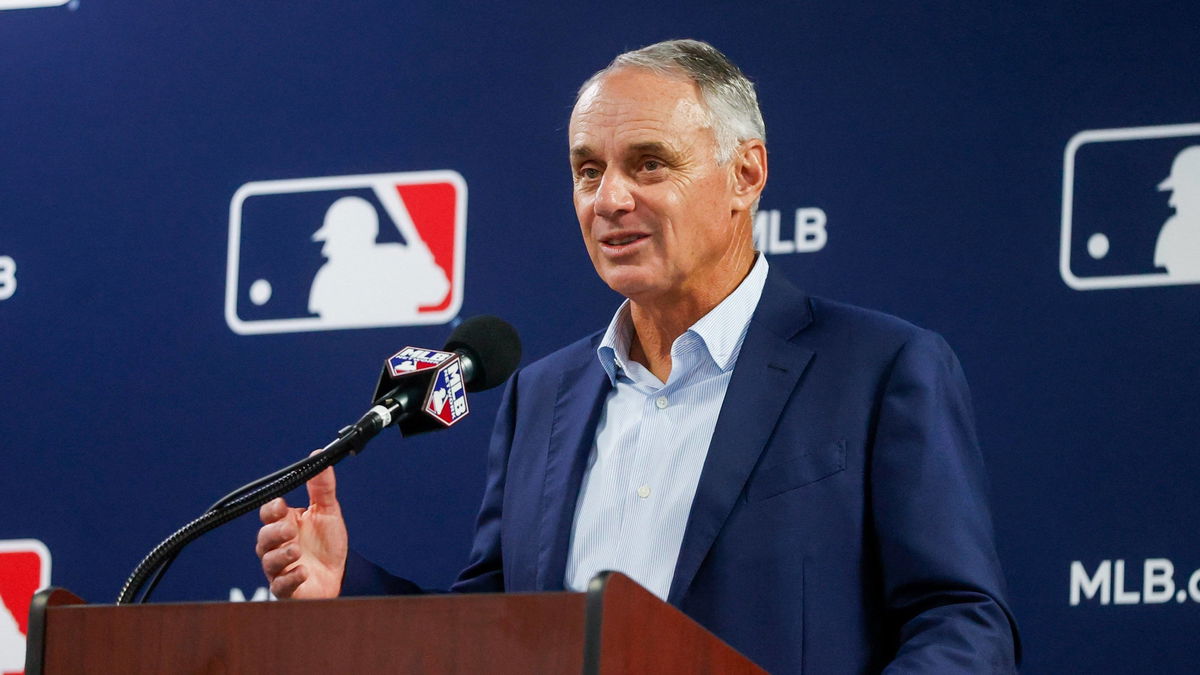
Imago
Image: MLB.com

Imago
Image: MLB.com
You said, irony of fate! We heard Major League Baseball. In June 2025, Major League Baseball took a big risk. The league took a minority stake in the spunky digital media company Jomboy Media, a platform with which the league has been at odds for years. Jomboy, known for its viral lip-reading videos and authentic coverage, accumulated more than 93 million social engagements last year alone. So, that made sense for MLB to connect with a new generation of fans.
Watch What’s Trending Now!
Just one month later, Commissioner Rob Manfred made a stunning public confession on The Pat McAfee Show. McAfee noted that MLB once felt like a league that “did not want to see the internet become a big baseball place.” Manfred didn’t sidestep the observation; he hit it on the head. “We got this wrong,” the commissioner stated bluntly, adding, “We’re just in the wrong place.” This seemed like a blatant public announcement of a profound change in philosophy.
Manfred outlined the league’s strategy for the modern era, focused on technology. He pointed out the mistake of the traditional thought process, where the league’s strategy was one where “we thought we could drive everything to our platform.” Now, he is showing a different way forward.
ADVERTISEMENT
“The right strategy is to make sure we are where the people are,” Manfred explained. “You got to go where people are going.” This statement represents the new “Manfred Doctrine.” The league will no longer build walls around its content. It will now actively bring the game to the fans, wherever they may be.
“We got this wrong.”
Rob Manfred tells Pat McAfee that MLB realized they were wrong to stop content creators from growing the sport pic.twitter.com/nqve7Wyvys
— Jomboy Media (@JomboyMedia) July 18, 2025
This shift did not happen overnight; it came from years of unforced errors. The league’s past is full of examples of it fighting its own best advocates. Take Rob Friedman, for instance, the creator of the “Pitching Ninja” Twitter account. In 2019, that very popular handle, loved by players and fans, was briefly suspended after a copyright dispute with MLB. The fan backlash was immense, leading to the #FreePitchingNinja trend. Because the league tried to silence one of its best storytellers.
ADVERTISEMENT
Jimmy “Jomboy” O’Brien (James Vincent Michael O’Brien) built a media empire around baseball despite the league’s policies. His coverage of on-field arguments and the Astros’ cheating scandal garnered significant attention. But in 2024, he revealed that he received mass copyright violation notices from MLB every year. These incidents showed a major disconnect. The league saw its most loyal creators as liabilities instead of crucial assets.
But eventually, things turned around. While Friedman is now a paid analyst for MLB Network, MLB owns a share in Jomboy Media!
ADVERTISEMENT
MLB’s new game plan is here
For a long time, MLB has not adopted a digital strategy like the rest of the league. NBA, for example, has long embraced the creator economy. The basketball league permits the viral sharing of highlight clips, viewing it as an effective advertisement. This tactic proved useful for NBA. As of 2022, the most-followed NBA team, the Los Angeles Lakers, had three times the X followers of the top MLB team, the New York Yankees.
The gap was even wider on Instagram, a key platform for younger fans, where the top NBA team (the Golden State Warriors) had over seven times the followers of the top MLB team (the Los Angeles Dodgers).
ADVERTISEMENT
With Manfred at the helm, the league is undergoing crucial changes. Apart from working on creator partnerships, Major League Baseball has directed its attention towards younger audiences. The PLAY BALL program, started in 2014, has increased casual participation in baseball by an astonishing 108%.
Top Stories
Boston Pressures Craig Breslow to Strike Back as Blue Jays Launch Bold Alex Bregman Push, Per Insider

“Do Something” — Yankees Veteran Puts Brian Cashman on Notice as Call Grows to Chase Bo Bichette After $75M Miss

Detroit Left Fuming After Justyn-Henry Malloy Forced to Make Way for $19M Acquisition

Orioles to Spoil Another Mets Plan as David Stearns Risks Losing $168M Star After Pete Alonso Heartbreak: Insider

2 Royals Star Face Trade Chopping Block After Matt Strahm Signing Restricts Kansas City

In 2021, the league introduced its “Creator Class” program. This initiative collaborates with content creators on TikTok and Instagram to make them brand ambassadors of MLB. It tries to reach new fans by genuine, player-led storytelling, an element where the league has struggled in the past.
As pointed out by MLB’s manager of creator marketing, Megan Reilly, in 2023, “The Creator Class was developed to leverage the content being produced and amplifying it to audiences beyond our core fans.”
ADVERTISEMENT
This new approach is already hitting a home run. Between 2019 and now, the median age of an MLB ticket buyer has declined by six years from 51 to 45. An MLB.tv subscriber’s average age has also decreased by four years since 2018. More importantly, viewership in the critical 18-34 age group is skyrocketing. The 2024 World Series reported an astonishing 93% year-over-year increase in viewership.
Feels like the strategy is working. Do you have any unique ideas that MLB can include to widen its fan base?
ADVERTISEMENT
ADVERTISEMENT
ADVERTISEMENT
ADVERTISEMENT

